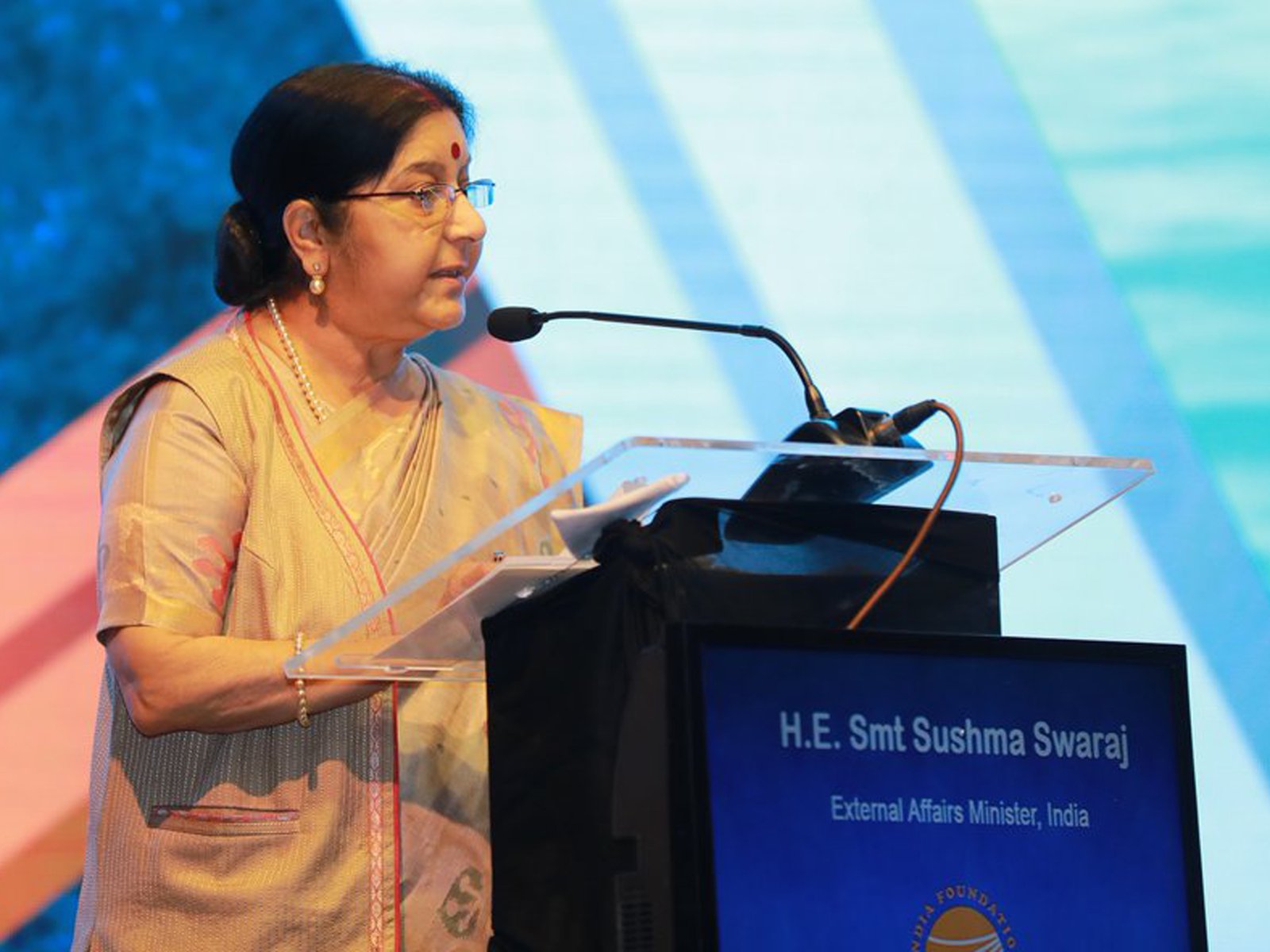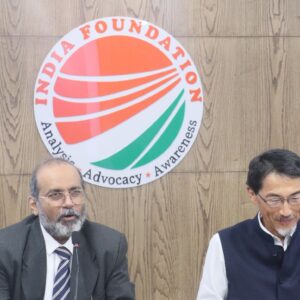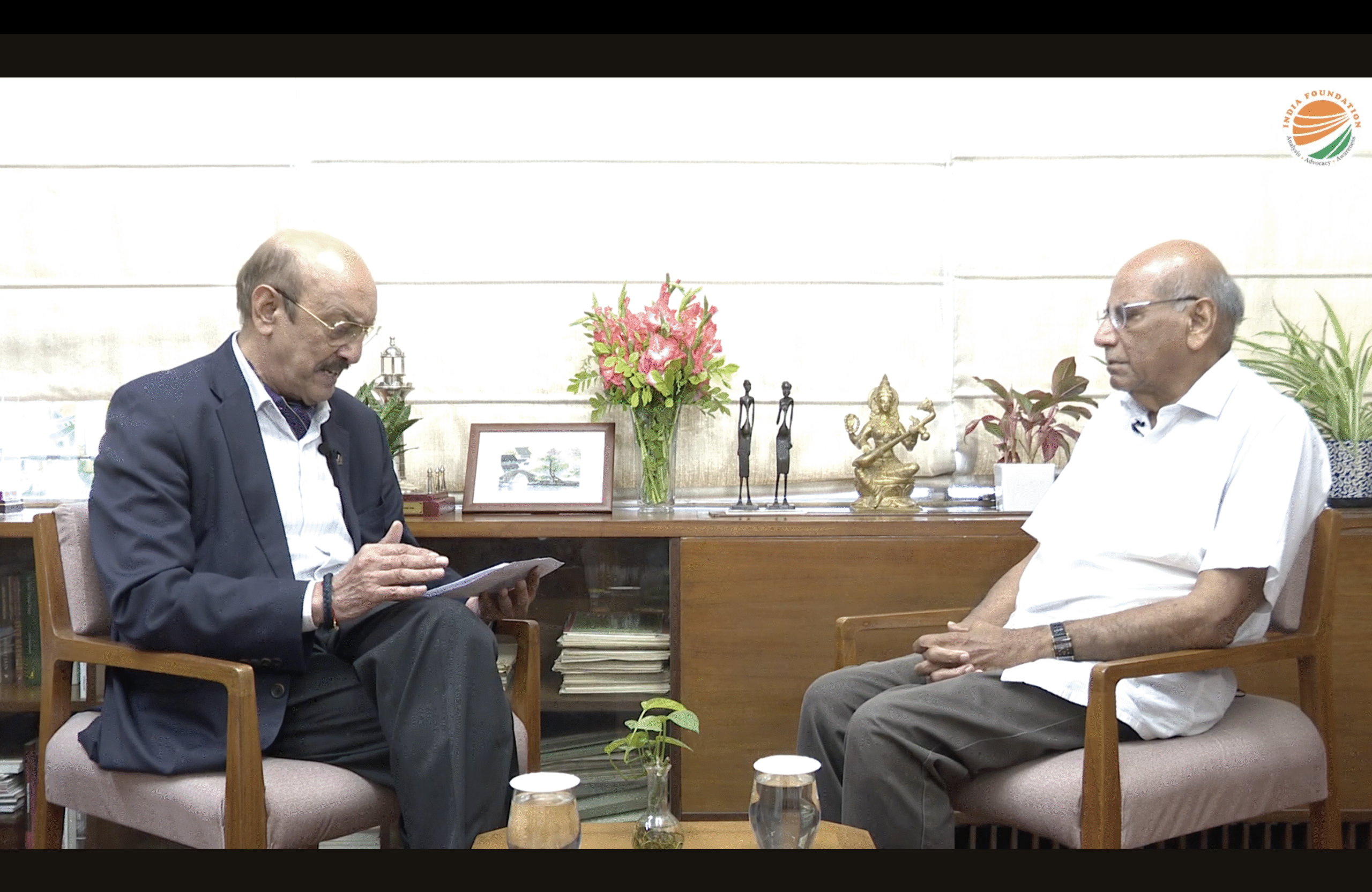India had the honour to host H.E. Mr. Nguyen Xuan Phuc, Prime Minister of Vietnam along with the leaders from ASEAN for the ASEAN-India Commemorative Summit in January 2018. This was followed by the State Visit of H.E. Tran Dai Quang (President of Vietnam who expired while in office on 21st September 2018) to India in March 2018. India and Vietnam agreed to further strengthen their cooperation in the maritime domain, including on anti-piracy, security of sea lanes and exchange of white shipping information. They also agreed on the importance of the early conclusion of an ASEAN-India Maritime Transport Cooperation Agreement. In this context, they intend to accelerate the establishment of direct shipping routes between the sea ports of India and Vietnam. India and Vietnam are connected not only by the common waters that wash their shores but also by a shared vision for peace and prosperity. Hanoi is therefore a particularly appropriate setting to discuss developments in the Indian Ocean and the Indo-Pacific region.
In an inter-dependent world characterised by enhanced economic and trade linkages, the importance of sustainable use of our ocean resources cannot be overstated. For us in India, the seas around us have nurtured our links of commerce and culture with our extended neighbourhood over millennia. This is evident in our shared cultural ties, stretching from Africa to Asia. It should come as no surprise, therefore, that in Indian mythology the Indian Ocean was known as ‘Ratnakara’ – the creator of gems. The waters of this great ocean were considered as the source of riches and prosperity. The economies of its littoral states depended directly and indirectly on the Indian Ocean. Today, it does not just support trade, but sustains livelihoods.
With the eastward shift of the engines of the global economy, there can be no doubt that the Indian Ocean is at the centre of the emerging ‘Age of Asia’. The economic importance of the Indian Ocean and its vital role in the continued prosperity and development of the littoral nations is well established. This region is host to the world’s busiest waterways and three-quarters of that traffic is headed for destinations beyond this region. As an important trade and energy waterway, carrying half the world’s container shipment, one-third of its bulk cargo traffic and two thirds of oil shipments, the Indian Ocean clearly assumes importance well beyond its immediate shores and its littorals.
Nurturing a climate of peace and stability in Indian Ocean region is therefore an important priority for India’s foreign policy. India believes that despite the region’s diversity, the challenges they face are quite similar. India’s vision for the region is one of cooperation and collective action. We cannot tap the bounty of the Indian Ocean without ensuring maritime peace and stability. Economic prosperity and maritime security go hand-in-hand. Security is an all-encompassing concept and includes traditional, non-traditional and newly emerging threats. These include maritime terrorism, smuggling, transnational crimes, drug-trafficking, illegal immigration, Illegal, Unreported and Unregulated (IUU) fishing, piracy, unregulated private maritime security companies and proliferation of sensitive items. It is further compounded by natural disasters, oil spills and effects of climate change, to which our region is highly prone. It is self-evident, therefore, that those who live in this region bear the primary responsibility for peace, stability and prosperity in the Indian Ocean. It is equally valid that it is only through collective action that we can meet these challenges.
India sees ASEAN as central to the regional maritime architecture. This was recognised by our leaders during the ASEAN-India Commemorative Summit in January this year. In the Delhi Declaration issued to mark this occasion, we reiterated the importance of maintaining and promoting peace, stability and maritime safety and security, and freedom of navigation and overflight in the region. India supports the lawful uses of the seas and unimpeded lawful maritime commerce and to promote peaceful resolutions of disputes, in accordance with universally recognised principles of international law, notably the 1982 United Nations Convention on the Law of the Sea (UNCLOS).
The diverse nature of the challenges before us require effective partnerships, both at the regional as well as multilateral level. India considers the Indian Ocean Rim Association (IORA) as an important instrument for achieving peace and security in the region. We commend Indonesia’s leadership in conceptualising the first ever IORA leaders Summit in Jakarta in March 2017, which resulted in the Jakarta Concord. This has infused fresh momentum into IORA activities. We are supportive of the invigoration of IORA activities, including blue economy and renewable energy. The focus of the IORA on maritime safety and security promotes a shared understanding of maritime issues, and helps develop cooperative mechanisms. Taken together, these will also enhance the regional humanitarian assistance and disaster relief (HADR) capacity in cases of natural disasters and crises. We share a common vision for the Indo-Pacific.
In March 2015, Prime Minister Modi put forward the concept of SAGAR, proposing a holistic vision for India’s engagement with this region. SAGAR in Hindi means ocean. Prime Minister Modi’s vision is that in this century SAGAR should stand for ‘Security and Growth for All in the Region’. In its implementation, this approach includes: (a) projects to promote hinterland linkages and strengthen regional connectivity, (b) linking South Asia to South East Asia (Act East) and to the Gulf (Think West), and (c) playing an active and constructive role in strengthening regional maritime security. Let me elaborate briefly on India’s approach to each of these three elements.
The first part is India’s focus on developing hinterland linkages & regional connectivity. Under Indian Government’s ‘Sagarmala’ project, initiatives taken including building new ports and modernising old ones, developing inland waterways and hinterland development are all aimed at a robust maritime logistics infrastructure. India’s eastern seaboard is a particular focus and can help recreate an integrated hub and spoke model for regional connectivity in the Bay of Bengal. Carrying this focus beyond its borders, India is today devoting more resources and assigning greater priority to building connectivity, contacts and cooperation in its immediate neighbourhood. This is manifest in projects in sectors ranging from rail and road transport to power generation and transmission, from port and waterways transport to educational and health exchanges.
The second element is the expanded interpretation of what constitutes India’s neighbourhood. This is reflected in the renewed emphasis in India’s “Act East” Policy and the new “Think West” policy towards West Asia and Gulf region. India’s Act East Policy is at the heart of its eastward orientation and ties in with its broader approach to the Indo-Pacific. Over the years, India’s approach to the region has matured into a broader strategic engagement – with the ASEAN and its related frameworks like the ASEAN Regional Forum (ARF), East Asia Summit (EAS) and ASEAN Defence Ministers Meeting Plus (ADMM+) as also with countries further east, including Japan, South Korea, Australia and the Pacific Islands.
India therefore accords high priority to key infrastructure projects such as the Kaladan multi-modal transport project that links to Sittwe Port, and the Trilateral Highway that will extend to Thailand. India’s recent agreement with Indonesia to develop port infrastructure in Sabong is yet another step in this direction.
India is also looking towards a more sustainable future for this region, by collaborating with its regional partners on Blue Economy projects, harnessing renewable energy, investing in development of desalination technologies, harvesting the biodiversity of the oceans, and sustainably mining the ocean depths for marine minerals. In all these engagements, India is guided by the development and security priorities of its partners. India’s approach is based on inter-dependence rather than dominance or narrow reciprocal considerations. India supports responsible and transparent debt financing matched by responsible lending practises.
Following universally recognized international norms, transparency, openness, financial responsibility, and promoting a sense of local ownership are essential for better and more sustainable development outcomes.
Coming to the third element, contributing to regional maritime security, India is working to ensure the safety and security of maritime traffic through the ocean by strengthening skills and logistics of its Indian Ocean neighbours. India is helping its maritime neighbours set up their coastal surveillance networks for developing shared Maritime Domain Awareness.
India has signed White Shipping Agreements with a number of countries. In addition, Indian ships have undertaken coordinated patrolling and EEZ Surveillance on the request of its partners. Another element of ensuring safety of navigation in the IOR has been the hydrographic support provided to its partners to chart the waters of the region. This has been augmented with a large training and capacity building effort.
In addition to the ASEAN and IORA mechanisms, the Indian Ocean Naval Symposium (IONS), of which India is a founding member, offers a broad-based platform for developing greater synergies with the Navies in the region. India also has well-established mechanisms like Regional Cooperation Agreement on Combating Piracy and Armed Robbery against Ships in Asia (ReCAAP) and Contact Group on piracy off Somalia (CGPCS), and anti-piracy patrols in the Gulf of Aden at the western extremity of this ocean.
Looking beyond practical day to day cooperation, it is important to build an overarching vision for the Indian Ocean region. Prime Minister Modi recently spoke of his vision of a free and inclusive Indo-Pacific. The Indian Ocean is a central component of this free and inclusive Indo-Pacific. The Indian Ocean is a region where some of the largest and smallest nations of the world have coexisted in harmony. The harmony is not only because of economic or cultural commonalities, but also of ideological and civilizational commonalities. Indo-Pacific region cannot be only a growth-engine; it has to be a community of ideas and commitments. We have to commit to the ideas of a rules-based order, equality under international law, peaceful resolution of disputes, and equitable distribution of the benefits of globalization.
(This article is a summary of the remarks made by Smt. Sushma Swaraj,
Hon’ble Minister for External Affairs, Government of India, on 27th August, 2018 at the
3rd Indian Ocean Conference, at Hanoi, Vietnam organised by India Foundation.)
(This article is carried in the print edition of January-February 2019 issue of India Foundation Journal.)




